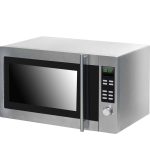Fires in the kitchen can escalate quickly, making it essential to have the right fire extinguisher on hand. Choosing one can be overwhelming due to various types and classifications available. Understanding the specific fire hazards of your kitchen environment and selecting the right extinguisher type can save lives and property. This guide offers valuable insights into assessing your needs and selecting the best fire extinguisher to bolster your kitchen safety. Be proactive—equip your space with the right tools for peace of mind and protection.
Understanding Fire Extinguisher Classes
When it comes to fire safety, understanding fire extinguisher classes is crucial. Each class is designed to combat specific types of fires, ensuring effective and safe extinguishing methods. Here's a breakdown of the main classes:
Additional reading : Which Induction Cooktop is Best for Precision Cooking Techniques?
- Class A: Targets ordinary combustibles such as wood, paper, and cloth.
- Class B: Designed for flammable liquids like gasoline, oil, and grease.
- Class C: Suitable for electrical fires involving appliances, wiring, and circuit breakers.
- Class D: Used for combustible metals such as magnesium and sodium.
- Class K: Specifically for kitchen fires, particularly those involving cooking oils and fats.
Selecting the correct fire extinguisher class is vital, especially in the kitchen. A Class K extinguisher is essential for safely managing grease fires, which are common in cooking environments. Using the wrong class can worsen the situation, highlighting the importance of awareness.
A common misconception is that any extinguisher can be used for all fires. However, using a Class A extinguisher on a grease fire can be ineffective or even dangerous. Education on types of fire extinguishers can prevent such errors, ensuring safety and effective fire management. Understanding these distinctions empowers individuals to make informed decisions in emergencies.
In parallel : What Is the Ideal Wattage for a Microwave in a Family of Four?
Recommended Fire Extinguishers for Kitchen Use
When it comes to ensuring kitchen fire safety, selecting the right extinguisher is paramount. The market offers various options, but some stand out as the best fire extinguishers for kitchens due to their effectiveness and ease of use.
Top-rated Fire Extinguishers for Kitchen Safety
-
First Alert Kitchen Fire Extinguisher: Known for its compact size and user-friendly design, this extinguisher is ideal for small kitchens. It effectively handles grease and electrical fires, making it a versatile choice.
-
Amerex B260: This model is praised for its durability and effectiveness against Class K fires. Its larger size makes it suitable for commercial kitchens where higher fire risks are present.
Features and Sizes Suitable for Kitchens
When choosing an extinguisher, consider its size and ease of operation. Smaller extinguishers are easier to handle in confined kitchen spaces, while larger models offer more extinguishing power. Key features include a clear pressure gauge and a sturdy metal valve for reliability.
Case Studies in Real Kitchen Emergencies
In a restaurant kitchen incident, the Amerex B260 quickly extinguished a grease fire, preventing extensive damage. Another case involved a home kitchen where the First Alert model was crucial in stopping an electrical fire before it spread. These examples underscore the importance of having the right extinguisher readily available.
Maintenance and Inspection of Fire Extinguishers
Regular fire extinguisher maintenance is vital for ensuring they're ready in an emergency. Routine checks should focus on functionality and pressure. Inspect the pressure gauge monthly to confirm it's within the safe range. If the needle is in the red zone, the extinguisher might not work correctly and needs immediate attention.
Professional servicing is essential at least once a year. Trained technicians can identify issues not visible in basic checks, ensuring the extinguisher's reliability. They will also check for corrosion, leakage, and ensure the tamper seal is intact.
Proper storage and handling are crucial. Store extinguishers in accessible locations, away from heat sources. Ensure they are mounted on walls or kept in brackets to prevent accidental damage. Avoid placing them on the floor where they might be knocked over or obstructed.
Here are some inspection tips:
- Ensure the safety pin is intact and not tampered with.
- Check for visible damage, such as dents or rust.
- Verify the label is legible and provides clear instructions.
By following these inspection tips, you can maintain your extinguishers in optimal condition, providing peace of mind in fire emergencies.
Legal Requirements and Standards for Kitchen Fire Safety
Understanding fire safety regulations is essential for maintaining a safe kitchen environment. Both local and national authorities establish guidelines to ensure kitchen fire safety. These regulations often include specifications on the types and placement of fire extinguishers, as well as mandatory safety equipment.
Kitchen fire safety laws require that extinguishers meet specific certifications. These certifications verify that the extinguishers have been tested and are effective against the types of fires likely to occur in a kitchen setting. Compliance with these standards is not only a legal obligation but also a crucial safety measure.
Failure to adhere to these fire safety regulations can result in severe consequences. Non-compliance may lead to fines, increased insurance premiums, or even closure of a business until standards are met. In worst-case scenarios, inadequate fire safety measures can result in catastrophic fires, endangering lives and property.
To ensure compliance, regularly review the latest kitchen fire safety laws and consult with fire safety professionals. This proactive approach helps maintain safety and avoid legal repercussions. Ultimately, understanding and adhering to these regulations protects both individuals and establishments from the devastating effects of kitchen fires.
Practical Safety Tips for Kitchen Fire Preparedness
Ensuring kitchen fire safety involves adopting proactive fire prevention strategies to minimise risks. Begin by keeping flammable items away from stoves and ovens. This includes dish towels, wooden utensils, and paper products. Regularly clean cooking surfaces and appliances to prevent grease buildup, which is a common fire hazard.
An essential aspect of kitchen fire safety tips is having a well-structured escape plan. In the event of a fire, knowing the quickest and safest exit routes can save lives. Ensure all household members are familiar with the plan and conduct regular fire drills to reinforce it. This preparation helps reduce panic and confusion during an actual emergency.
Training family members in proper fire extinguisher use is vital. Everyone should know how to operate an extinguisher correctly. A simple mnemonic to remember is PASS: Pull the pin, Aim low, Squeeze the handle, and Sweep the nozzle from side to side. Practising this technique can make a significant difference in controlling a small fire before it escalates.
By implementing these fire prevention strategies and safety tips, you create a safer kitchen environment, reducing the likelihood of fires and ensuring readiness in case of an emergency.
Frequently Asked Questions about Kitchen Fire Extinguishers
Navigating the world of kitchen fire extinguishers can be daunting, given the variety of options and safety considerations. Here, we address some common fire safety questions to help you make informed choices.
What type of extinguisher is best for kitchen fires?
For kitchen environments, a Class K extinguisher is ideal. It’s specifically designed to handle fires involving cooking oils and fats, which are prevalent in kitchens. This type is essential for quickly and safely extinguishing grease fires.
Can I use a water extinguisher on a kitchen fire?
No, using a water extinguisher on grease or electrical fires can be dangerous. Water can spread the grease, intensifying the fire, or cause electrical shock if used on electrical fires. Always opt for a Class K or a multi-purpose extinguisher that covers Class B and C fires for kitchen use.
How do I choose the right extinguisher for my kitchen?
Consider your kitchen's size and the types of cooking you do. A small home kitchen may only need a compact extinguisher, while a commercial kitchen might require larger, more robust models. Ensure the extinguisher is easily accessible and operable by all family members or staff.











